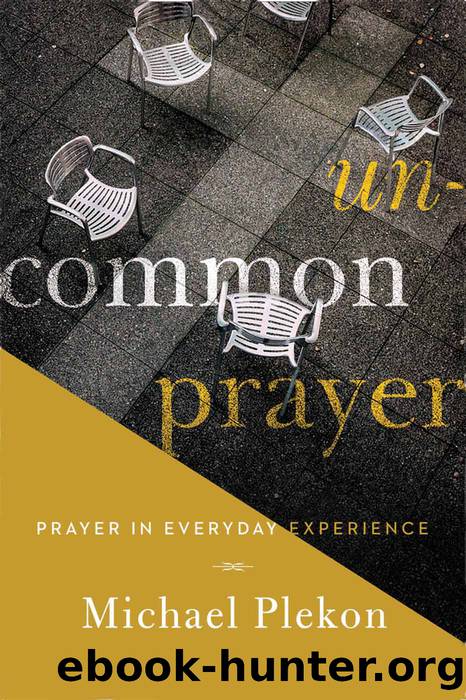Uncommon Prayer by Plekon Michael;

Author:Plekon, Michael;
Language: eng
Format: epub
Publisher: University of Notre Dame Press
Published: 2016-08-15T00:00:00+00:00
Dorothy Day at Maryfarm, Easton, Pennsylvania, ca. 1938. Photo courtesy of Department of Special Collections and University Archives, Marquette University Libraries.
She was not a wannabe monastic, though she was in fact a Benedictine associate who prayed the daily prayer of the hours in addition to daily communion, retreats, meditation, and readings from scripture and other spiritual materials. The liturgy and prayer were inseparable from the movement and its communities, even if individual members were less than believing or devout. And while her spiritual practice and frequently her attitude toward the church were quite traditional, she was not imprisoned in the least by unquestioning loyalty. Numerous times, explicit in letters and diary entries and columns, she was openly, rigorously critical of the institutional church, its clergy, and its policies.28 She once told a disillusioned colleague that the church had always been full of corrupt, dysfunctional popes, bishops, abbots, and other leaders from the very beginning.29
âAll the way to heaven, is heavenâ¦.â So went Teresa of Avilaâs line, concluding, âall the way to hell is hell.â Dorothy Day was very fond of this saying, and the enormous collection of writings she created echoes both sides of the proverb. Robert Ellsberg used it as the title of the edition of her letters.30 Her voice was stridentâdemanding political and social change for a more just society. Then she would record in her columns, not just in her journal and private letters, her deep discouragement, frustration, and exhaustion with the endless stream of those in misery who surrounded her in the Worker houses.
Dorothy, a convert, became a model of faithful Catholic practice in daily prayer and communion, regular retreats and confession, respect for the bishops and clergy. Yet she was at the same time ruthless in identifying their dysfunctionality, ineptitude, and corruption. She realized that she would have to work around the institutional church and opposed any official status or relation of either the Worker movement or the houses to the Catholic Church. She insisted on dedication and loyalty from Worker resident members, yet she could react in exasperation at the lives, actions, and values of young people, despite the experimentation and extreme nonconformity of her own youth. Her wild youth perhaps made her rigid and puritanical when it came to sex, divorce, and other moral questions. She used to cut off communications with Worker members or ex-members who divorced. She was surprisingly traditional with younger women in the 1960s and â70s given her own liberated style of life in her twenties.
She opposed war even when it was hugely popular, during World War II. She refused to participate in air raid drills and was arrested several times between 1955 and 1958. Once, she appeared before a judge who called the protestors âmurderers.â She was arrested numerous times in her life, the last time in 1973 for protests in California for Cesar Chavez and the United Farm Workers. For all this public persona as a person of radical conscience and action, she was intensely knit into the Worker communities, those in which she lived as well as others.
Download
This site does not store any files on its server. We only index and link to content provided by other sites. Please contact the content providers to delete copyright contents if any and email us, we'll remove relevant links or contents immediately.
| Clergy | Devotionals |
| Faith | Inspirational |
| Meditations | Monasticism & Asceticism |
| Prayer | Prayerbooks |
| Ritual | Sermons |
More Language of Letting Go: 366 New Daily Meditations by Melody Beattie(2474)
The Holy Spirit by Billy Graham(2455)
To Light a Sacred Flame by Silver RavenWolf(2374)
The Secret Power of Speaking God's Word by Joyce Meyer(2276)
Tuesdays With Morrie by Mitch Albom(2195)
The Lost Art of Good Conversation by Sakyong Mipham(2143)
The Traveler's Gift by Andy Andrews(2034)
Kundalini by Gopi Krishna(1842)
A Kingsbury Collection by Karen Kingsbury(1731)
Finding Chika by Mitch Albom(1661)
Angels of God: The Bible, the Church and the Heavenly Hosts by Mike Aquilina(1645)
As a Man Thinketh by James Allen(1589)
Angels by Billy Graham(1567)
The Yoga of Jesus: Understanding the Hidden Teachings of the Gospels by Paramahansa Yogananda(1543)
Curse Tablets and Binding Spells from the Ancient World by Gager John G.;(1530)
Barking to the Choir by Gregory Boyle(1514)
Autobiography of a Yogi (Complete Edition) by Yogananda Paramahansa(1508)
Anxious for Nothing by Max Lucado(1424)
How To Be Born Again by Billy Graham(1420)
